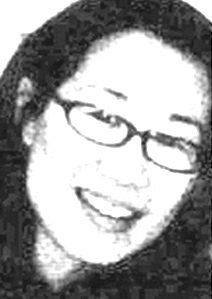I used an X-acto knife to release the eye shadow from the pan and pulverized it with a small stone. Then I mixed a batch of egg medium (egg yolk + white vinegar + water) and mixed up just a blade's worth of the pulverized eye shadow with about equal amount of the egg medium. This was used to paint the 4 test patches, the lines, and the dry brushing on the left page.
I then mixed another blade's worth of the eye shadow pigment with about an equal amount of matte medium, and this was used to paint the 4 patches, the lines, and the dry brushing on the right page.

Both seem 'permanent', ie, couldn't be smudged nor lifted with water after drying (don't know about 'archival'). The egg medium resulted in a smooth surface -- the painted area did not feel much different from the unpainted paper. The matte medium definitely had a texture to it. I'm liking the smoother surface better, and it would definitely be the better choice if I was to paint the paper first before printing the text. I used both a brush and a makeup applicator (a spongy thing) to paint the 4 patches.
I also tried adhering paper to the plexi with pva and gel medium. The gel medium made a good bond but the pva did not. Both left visible marks. Also, every little bit of fuzz stuck on there was visible! If I glue, I can only glue a portion of the paper to the plexi, and I would have to cover the other side too to hide the glue marks. I'll try scratching the surface of the plexi to see if I can create enough of a 'frosted' surface to hide the glue marks. The alternative option -- having holes drilled and then sewn -- does not really appeal to me, both in terms of the visible sewing through the plexi and how I visualize the book will open -- if I can't glue at all, then the end paper will flap around, unless I come up with a solution to that.




No comments:
Post a Comment